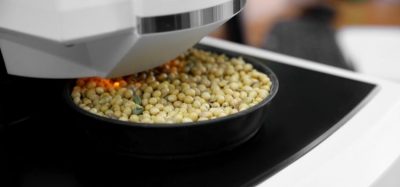New applications of PCR in food control
- Like
- Digg
- Del
- Tumblr
- VKontakte
- Buffer
- Love This
- Odnoklassniki
- Meneame
- Blogger
- Amazon
- Yahoo Mail
- Gmail
- AOL
- Newsvine
- HackerNews
- Evernote
- MySpace
- Mail.ru
- Viadeo
- Line
- Comments
- Yummly
- SMS
- Viber
- Telegram
- Subscribe
- Skype
- Facebook Messenger
- Kakao
- LiveJournal
- Yammer
- Edgar
- Fintel
- Mix
- Instapaper
- Copy Link
Posted: 30 June 2010 | Jeffrey Hoorfar Research Manager & Professor of Food Microbiology, National Food Institute, Technical University of Denmark | No comments yet
PCR testing of pathogens has gained widespread use in quality control laboratories throughout the food industry. Many excellent easy-to-use commercial kits are now available for a wide range of microorganisms. But are there any other potential uses for PCR other than a simple plus/minus response that indicates presence or absence of a pathogen harmful to consumers? And why is it important for the food industry to make more use out of PCR testing?
PCR testing of pathogens has gained widespread use in quality control laboratories throughout the food industry. Many excellent easy-to-use commercial kits are now available for a wide range of microorganisms. But are there any other potential uses for PCR other than a simple plus/minus response that indicates presence or absence of a pathogen harmful to consumers? And why is it important for the food industry to make more use out of PCR testing?
PCR testing of pathogens has gained widespread use in quality control laboratories throughout the food industry. Many excellent easy-to-use commercial kits are now available for a wide range of microorganisms. But are there any other potential uses for PCR other than a simple plus/minus response that indicates presence or absence of a pathogen harmful to consumers? And why is it important for the food industry to make more use out of PCR testing?
PCR has been used for more than two decades by clinical laboratories to detect pathogens in human samples, but has only recently gained widespread use by food testing laboratories. There are several reasons for this. First, it is more difficult to extract DNA from food samples, especially when there are low numbers of target pathogens to be detected. Second, until recently, PCR required specialist training for personnel and clean laboratories, which are not easily available in food production premises. Third, the price per test was not affordable by food producers, in particular by smaller businesses with a low profit margin. Finally, international validation and acceptance is a major obstacle to the delayed implementation of PCR.
Recent advances in closed-tube and automated PCR and the availability of relatively low cost kits and equipment have made it possible for almost any food producer to set up a PCR laboratory, virtually next to the production line, and use the same food production personnel to do the testing.
High through-put screening of samples
Quantification by real-time PCR is increasingly becoming an established technique. Despite this, PCR is still mostly used only to declare food products free from pathogens such as Salmonella or Listeria. That is one of the main strengths of PCR testing: screening a large number of samples for negative results to rapidly dispatch food products to the market. Samples that are found positive by PCR may still need to be confirmed by conventional cultivation methods. This is a requirement by many regulatory authorities or trade organisations.
So far there has been hesitation in preventing food products that tested PCR-positive but culture-negative from entering the market. That may change in the future, as more convincing evidence emerges that PCR-positive foods are not false positives, but represent a real threat to consumers. The ultimate proof is, however, to directly link patients that have eaten such foods to the pathogen, but such studies are difficult to conduct.
Enumeration of pathogens
One of the unexploited potentials of PCR is to gain information on the numbers of pathogens present in the food or food production environment. This could help food producers to assess the impact of hygiene measures or implementation of new quality assurance efforts. When personnel involved in quality assurance observe a reduction of the contamination they have been fighting, they would be encouraged to continue the efforts.
Fortunately, the new generation of PCR technologies takes us closer to achieving this aim, but not completely. The problem is that most microbial tests rely on a preliminary enrichment step that is still being done in traditional culture broths. This is, by the way, due to the still insufficient detection limit of the current PCR protocols, when performed directly on food samples.
At this very first step of testing, not only the target pathogen, but also the harmless background bacteria that are usually present in all food samples are increased. That, besides the insufficient detection limit of current PCR kits, makes enumeration more complicated, if not impossible.
We have recently developed a protocol for a shorter preliminary enrichment that stops the pathogen growth in the log phase. This has been shown to be useful for a fast and low-cost semi-quantification of Campylobacter1. Work is in progress to apply this protocol to other pathogens, like Salmonella. There is also the possibility of direct quantification, but that poses even more demand on the extraction of target cells or DNA.
Viable versus dead
One of the main drawbacks of PCR is the risk of detecting DNA from dead bacteria that do not constitute any risk to consumers. This is certainly a valid point when using PCR directly on a food sample, but by using a preliminary enrichment step, or dyes that prevent the detection of dead cells (see below), this issue is non-existent.
In addition, due to the food processing conditions, bacteria can become damaged (stressed) and thereby unable to multiply in the primary culture step. How do we solve this problem? One way to tackle this problem is to add to PCR reagents dyes that can enter dead cells (such as propidium monoazide) and avoid PCR amplification of their DNA. Although this might sound complicated, in practice it is quite simple to perform and can be done by most quality assurance laboratories. This will ensure that potentially harmful food does not leave the production premises.
Biotracing products
Biotracing is a new concept that combines laboratory results obtained from PCR tests, among others analyses, with information collected during the entire food production process, in order to make sound decisions about product recall or determine the source of possible contamination.
Biotracing traces and tracks pathogens and their substances along the food chain. Laboratory tests will be fed into tracing software to calculate the overall risk of pathogens entering into the food chain and ending up further down the distribution and sales channels. This is currently being developed by scientists2, but can become part of the future quality assurance programs or Laboratory Information Management Systems at the food production factories.
Identifying the source of contamination
Another new application of PCR is its use by routine laboratories to determine the source of contamination. Is it due to raw material, personnel, equipment or the food processing environment? By simultaneous detection and the so-called ‘sub-typing’ of pathogens, it will be possible for food producers to accumulate in-house data on persisting strains of, say, Listeria monocytogenes in cheese-making environments. The addition of new ‘cuttingenzymes’ to post-PCR tubes could be easily done, but at the present requires highly trained personnel. There is no question that this will be made much easier in the future, where different versions of the same PCR kit will be commercially available.
Recent developments in real-time PCR have made it possible to carry out high-throughput source training for routine purposes. The technique called High-Resolution Melting Curve Analysis takes advantage of differences in the melting curve of multiple DNA products, all in the same PCR tube! The software included in the PCR instrument produces several distinct graphs, each representing one sub-type of target pathogen. This is all done without any additional laboratory work3,4.
Conclusions
The full advantage of PCR testing, as compared to conventional techniques, in the food industry is still to come. Scientists should continue to explore new and non-complex applications. One of the major challenges to PCR testing is the lack of international validation and harmonisation. Both the food industry and kit producers would benefit from a single validation protocol that is agreed by all parties involved in using PCR. Especially for new applications of PCR, it is important to develop robust protocols that can be easily standardised and incorporated into current kits.
References
1. Josefsen MH, Jacobsen NR and Hoorfar J (2004). Enrichment followed by quantitative PCR for rapid detection and as a tool for quantitative risk assessment of foodborne thermotolerant Campylobacters. Applied and Environmental Microbiology 70:3588-3592.
2. Hoorfar J, Wagner M, Jordan K, Barker GC (2010)..Biotracing: A novel concept in food safety. In: Brul S, Fratamico P, McMeekin T (Eds.): Tracing pathogens in the food chain. Woodhead Publishing, Cambridge, UK.
3. Rudi K, Kleiberg GH, Heiberg R, Rosnes JT (2007). Rapid identification and classification of bacteria by 16S rDNA restriction fragment melting curve analyses (RFMCA). Food Microbiology 24:474-81.
4. Tajiri-Utagawa E, Hara M, Takahashi K, Watanabe M, and Wakita T (2009). Development of a rapid high-throughput method for high-resolution melting analysis for routine detection and genotyping of noroviruses. Journal of Clinical Microbiology 47: 435–440.
About the Author
Jeffrey Hoorfar
Jeffrey Hoorfar is professor of food microbiology at the National Food Institute, Technical University of Denmark (www.dtu.dk). He has led two major European research projects on PCR testing (FOOD-PCR I and FOOD-PCR II). His long collaboration with food industry has given him insight into the challenges of using new tests in real-life situations. By launching one of the largest European projects in food safety (www.biotracer.org), he has taken PCR further into predictive modelling, risk assessment and source-attribution studies.








